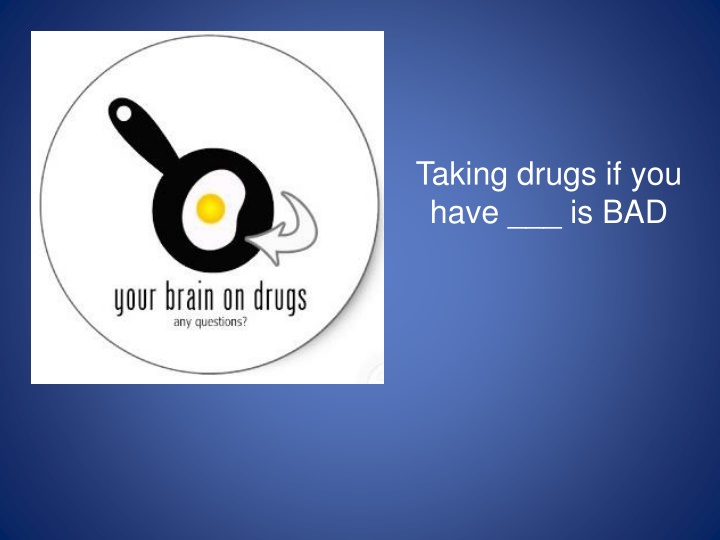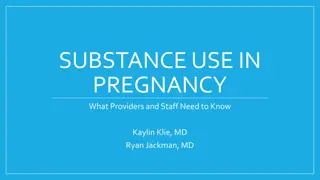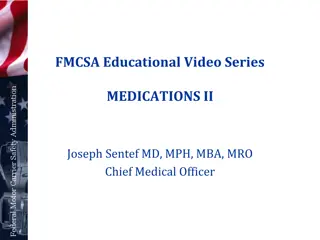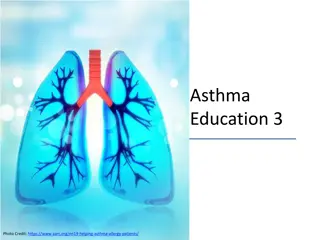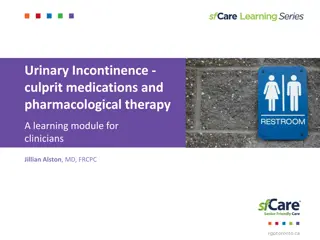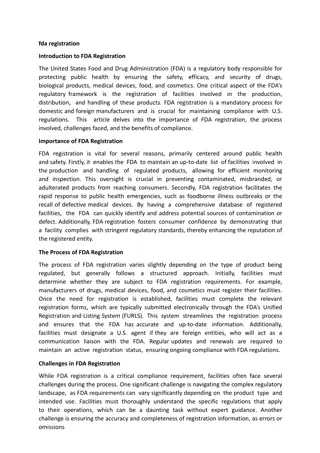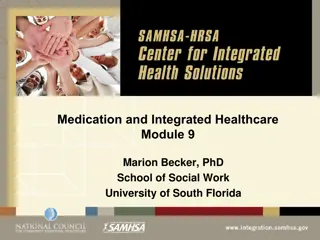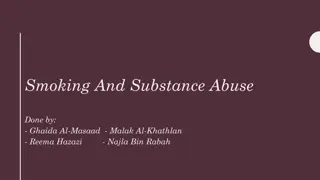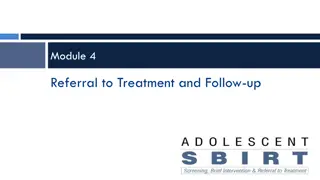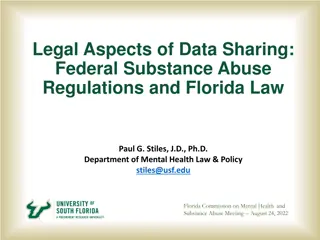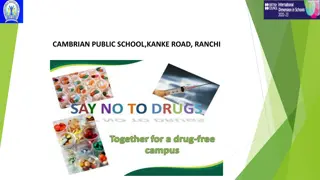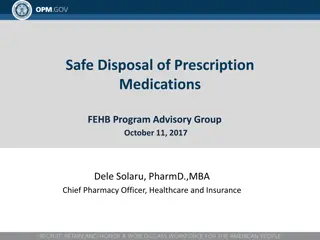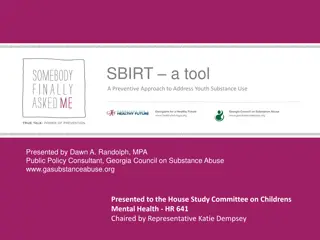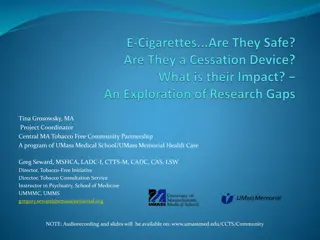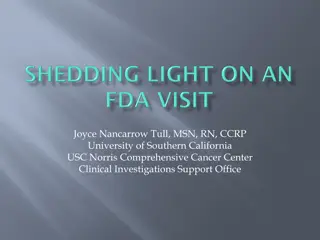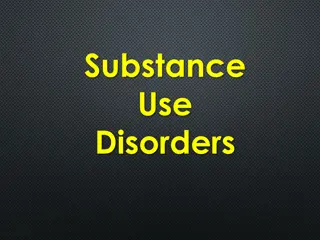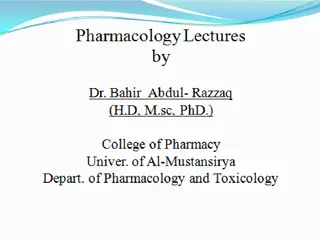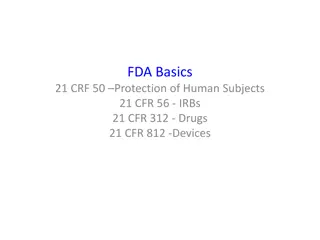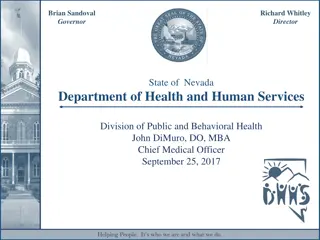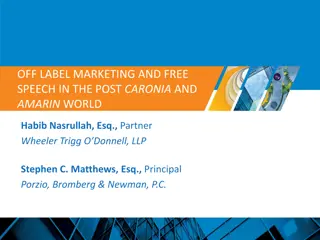Substance Abuse Treatment Strategies and FDA-Approved Medications
Explore the various substance abuse treatment approaches, including psychological and pharmacological interventions, along with FDA-approved medications like disulfiram, naltrexone, and buprenorphine. Learn about the challenges in substance abuse treatment and the psychology of substance users. Discover primary care interventions and the transtheoretical model for behavioral change in addiction treatment.
Download Presentation

Please find below an Image/Link to download the presentation.
The content on the website is provided AS IS for your information and personal use only. It may not be sold, licensed, or shared on other websites without obtaining consent from the author.If you encounter any issues during the download, it is possible that the publisher has removed the file from their server.
You are allowed to download the files provided on this website for personal or commercial use, subject to the condition that they are used lawfully. All files are the property of their respective owners.
The content on the website is provided AS IS for your information and personal use only. It may not be sold, licensed, or shared on other websites without obtaining consent from the author.
E N D
Presentation Transcript
Taking drugs if you have ___ is BAD
Increased rates transmission Unprotected sex Anal intercourse Group sex or multiple partners Internet partners Injection drug users High or intoxicated during sex Sex work Sex with serodiscordant partner
Substance Treatment in the USA Forty million Americans ages 12 and older (16 percent) only about 1 in 10 people receive treatment Addiction treatment programs are not adequately regulated
Substance abuse treatments Psychological Pharmacological Combination Public Health
FDA approved pharmacologic Alcohol disulfram (antabuse) Acamprosate naltrexone Nicotine Buproprion Varenicline nicotine replacement
FDA approved pharmacologic Opioid Methadone maintenance Buprenorphine Naltrexone (PO/IM) Buprenorphine/naltrexone
Psychology of Substance User Impulsive Fearless Incapable of delayed gratification Opposite of people who go into health care!!!
Traditional counseling Immediate and Total Abstinence Provider set goals Confrontational Dichotomis Good (What I say) Bad (What you do) Nearly Completely Ineffective!!
Transtheoretical Model Gradual Behavioral Change Conceptualized stages Identify patient s current stage Strategies to advance the stage Understanding of backward and forward progress of change Reduced provider frustration Increased patient acceptance
Primary Care Intervention toxicological and questionnaire screening brief motivational interviews active referrals a list of treatment providers follow-up booster phone call.
Risk Diagnosis Questionnaire Starting point for clinical interaction Simple self report instrument 13 questions Clinically validated Rapidly elicits risk behavior without appearing judgmental Callahan 2007
http://www.motivationalinterview.org/ Project MATCH http://pubs.niaaa.nih.gov/publications/MATCHSeries3/
